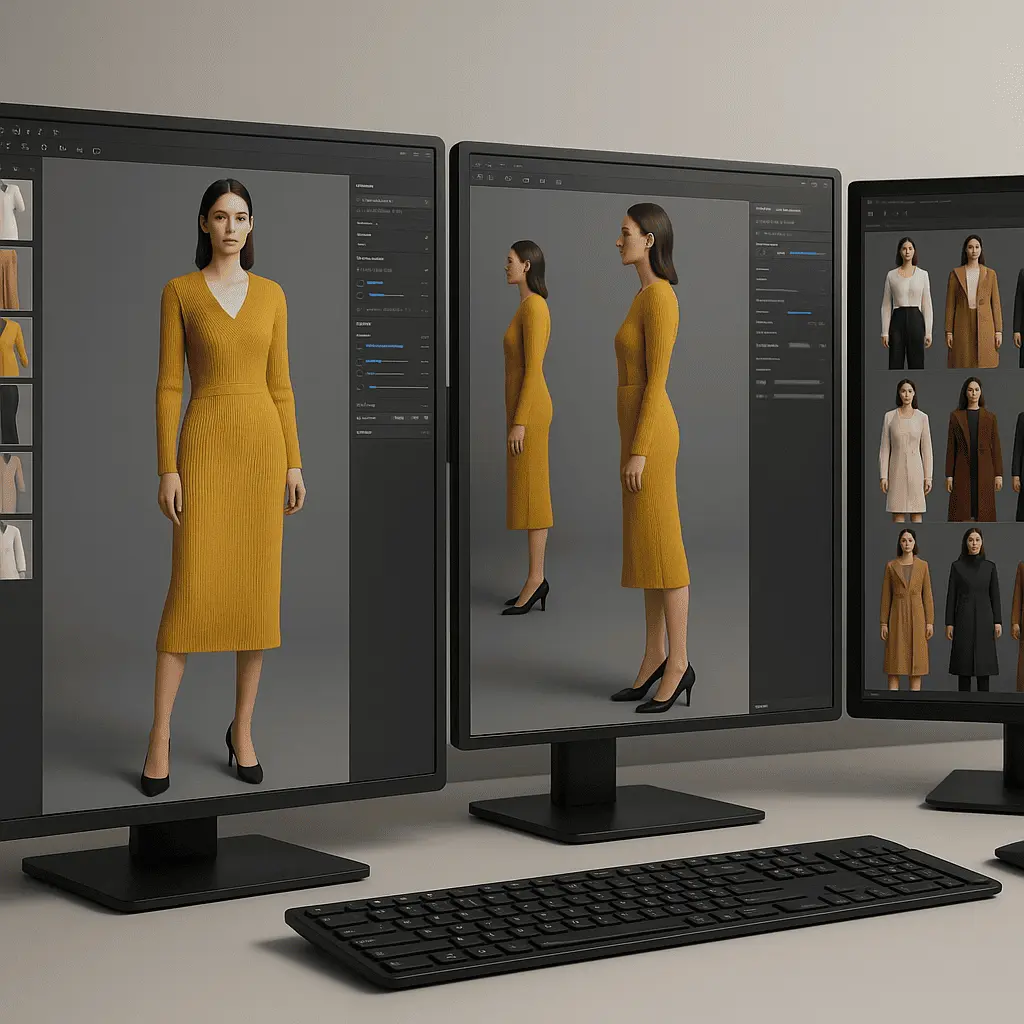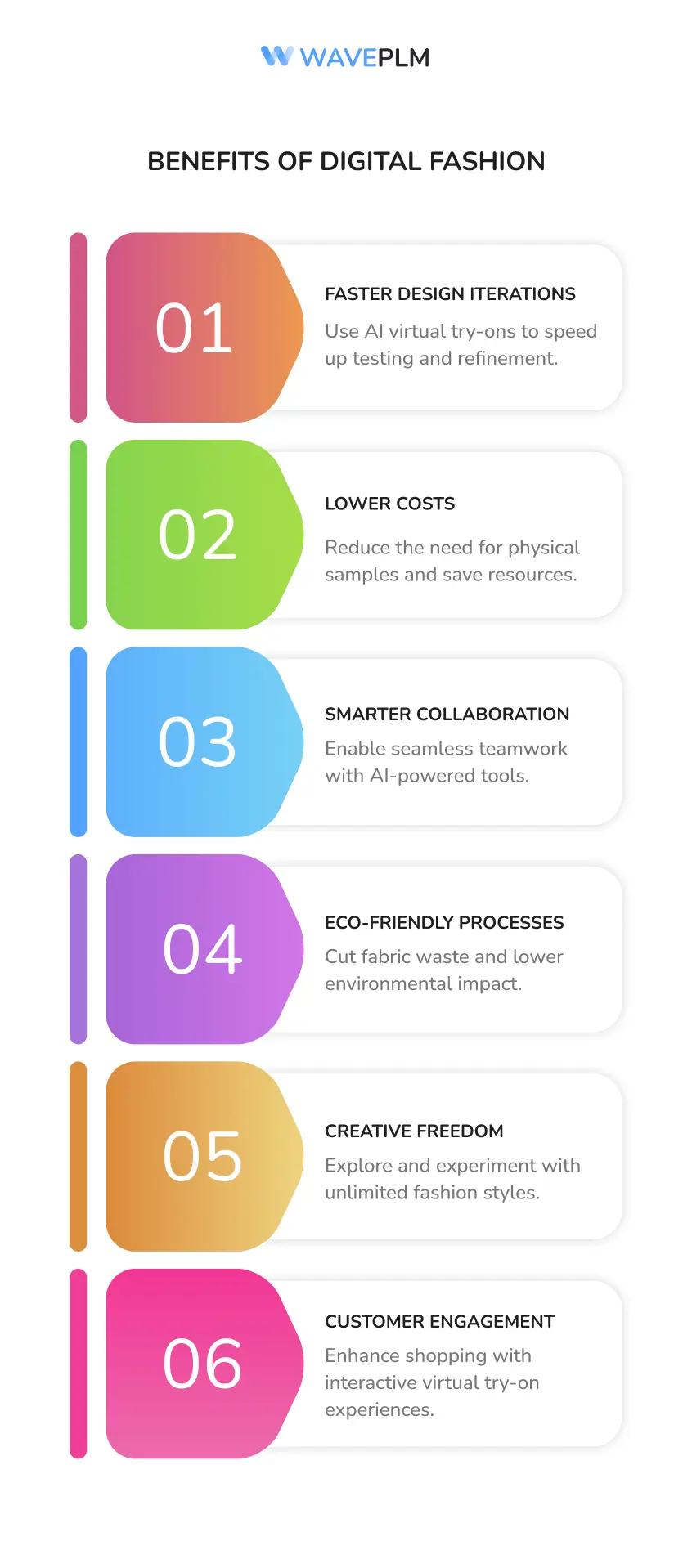
The fashion industry is entering a new era shaped by digital fashion and artificial intelligence. One of the most powerful shifts comes from the use of virtual model clothes. Fashion brands can now create, test, and showcase clothing images with advanced virtual try on technology. Instead of relying on dozens of physical samples, they achieve realistic results through 3D apparel design, AI fashion models, and PLM software. This combination helps brands save time, reduce costs, boost sales, and build sustainable collections.
What Are Virtual Models for Clothes?
Virtual model clothes represent garments worn by ai fashion models in a fully digital space. Designers upload clothing images or product photos and instantly see how outfits look on different body types. A virtual model for clothes can reveal fabric drape, stitching, accessories, and even how clothing moves in real life. With just a few clicks, teams can test different styles, match accessories, and adjust fabrics. This is super easy for users and gives fashion brands more creative freedom.
AI generated models also allow brands to create collections before physical production begins. Fashion models that are AI generated can try on clothes instantly, giving brands a better idea of what styles will resonate with customers. This improves the overall fashion experience while cutting down on waste.
Why Digital Fashion Matters
Digital fashion is a game changer for fashion brands. It replaces physical samples needed for every design with virtual clothes that exist in 3D. Brands can now generate AI clothes previews, instantly share them with teams, and approve designs faster. This shift reduces environmental impact and supports long-term sustainability.
Digital fashion also improves the way customers interact with fashion brands. On websites, ai virtual try features let customers try on clothes with realistic results. AI outfit previews can match clothing items with accessories, showing users how different styles will look before purchase. This is not only a better shopping experience but also helps brands boost sales.
Benefits of Digital Fashion:
- Faster design iterations with AI virtual try
- Lower costs by cutting down on physical samples
- Easy collaboration across teams with AI tools
- Reduced environmental impact from less fabric waste
- More freedom to create and explore fashion styles
- Enhanced customer engagement with virtual try on experiences

Virtual Sampling in Apparel Development
Virtual sampling is at the heart of modern fashion development. Designers generate clothing items in 3D, simply upload an original photo, and apply an ai clothes changer. This creates on model photos that showcase AI generated models wearing the design. Teams can provide feedback instantly, reducing delays that normally happen with physical samples.
|
Step in Process |
Traditional Workflow |
With Virtual Try On Technology |
|---|---|---|
|
Initial Design |
Sketches and physical mockups |
AI generated outfits on model photos |
|
Sample Development |
Multiple fabric and material samples |
Virtual clothes tested with ai models |
|
Review & Feedback |
Physical fittings and photos |
Instant on model photos and edits |
|
Final Approval |
Many sample adjustments |
Faster with virtual try and ai tools |
Virtual sampling also reduces the number of physical samples needed. Instead of producing 10 different prototypes, designers generate multiple digital variations with different body types. This means more iterations at lower cost and faster time to market.
How PLM Software Supports Digital Fashion
PLM software acts as the platform that connects every part of product development. When brands create ai virtual try designs, PLM software stores clothing images, product photos, and fabric details. This ensures quality, consistency, and smooth collaboration across fashion brands.
Key Roles of PLM in Digital Fashion:
- Centralizing 3D assets – Store ai generated outfits, fabrics, and flat lays in one platform.
- Tracking changes – Teams view every detail of ai generated models in real time.
- Connecting suppliers – Share product photos and virtual try on files instantly with factories.
- Improving approvals – Managers review virtual model clothes online and approve faster.
- Ensuring quality – Keep consistent product image data for sourcing and marketing teams.

How Virtual Models and PLM Work Together
The true power emerges when ai fashion models and PLM software work hand in hand. This creates a seamless workflow where designers generate outfits with an ai clothes changer, upload original photos, and store them in PLM. Teams across sourcing, marketing, and sales then access the same data instantly. Fashion brands can showcase different styles on ai generated models, explore clothing items on different body types, and present realistic outfits online.
Example Workflow:
- Designer creates an outfit using an ai clothes changer.
- PLM software stores the product photo and original photo with fabric details.
- Teams review ai generated models wearing the outfits.
- Feedback is shared instantly across the platform.
- Approved styles move directly to sourcing and production.
- Marketing teams use on model photos to showcase the collection on websites.
Why Fashion Brands Adopt Virtual Model Clothes
Fashion brands adopt virtual try on technology because it changes the way they work. By using ai fashion models, they save time, reduce costs, and improve design accuracy. They no longer need as many physical samples and can showcase AI generated models across different fashion styles. This improves product image quality, enhances customer engagement, and makes it easier to explore new outfits and accessories.
Top Reasons Brands Adopt AI Virtual Try:
- Save time with instant on model photos
- Reduce costs by cutting physical samples
- Showcase clothing images in different body types
- Enhance product image quality for marketing
- Explore new outfits, fashion styles, and accessories
- Boost sales by giving customers realistic previews

Case Study Template: Virtual Sampling Impact
|
Metric |
Before Virtual Try On |
After AI Virtual Try |
|
Sample Costs per Style |
$500–$800 |
$50–$100 |
|
Development Time |
8–12 weeks |
3–5 weeks |
|
Environmental Impact |
High fabric waste |
|
|
Design Iterations |
Limited due to cost |
Unlimited with ai tools |
|
Customer Engagement |
Low |
High with virtual try |
This comparison shows how powerful AI generated tools can be. By using ai virtual try, brands achieve realistic results, cut waste, and launch collections much faster.
Future of Digital Fashion with PLM
The future of fashion is virtual and AI powered. Fashion models will soon be fully ai generated and displayed on websites, e-commerce platforms, and social media. Customers will try on clothes with just one click and instantly see outfits on different body types. Fashion brands will generate amazing collections digitally, save costs, and deliver higher quality results. Flat lays, videos, and product photos will all be enhanced by AI tools.
AI try on will continue to evolve with better body detail and more realistic styles. Customers will simply upload an original photo, and ai generated models will showcase different outfits instantly. This makes fashion more interactive, personalized, and sustainable.
Conclusion
Virtual model clothes powered by ai virtual try and PLM software represent the future of fashion. They combine ai generated models, 3D apparel design, virtual clothes, and digital fashion into one ecosystem. Fashion brands that adopt these tools enhance their fashion experience, save time, reduce waste, and achieve sustainable results. As customers demand more interactive shopping, the rest of the industry will follow. Virtual try on technology, ai clothes changer tools, and PLM platforms are becoming the standard for product development, marketing, and customer engagement.




